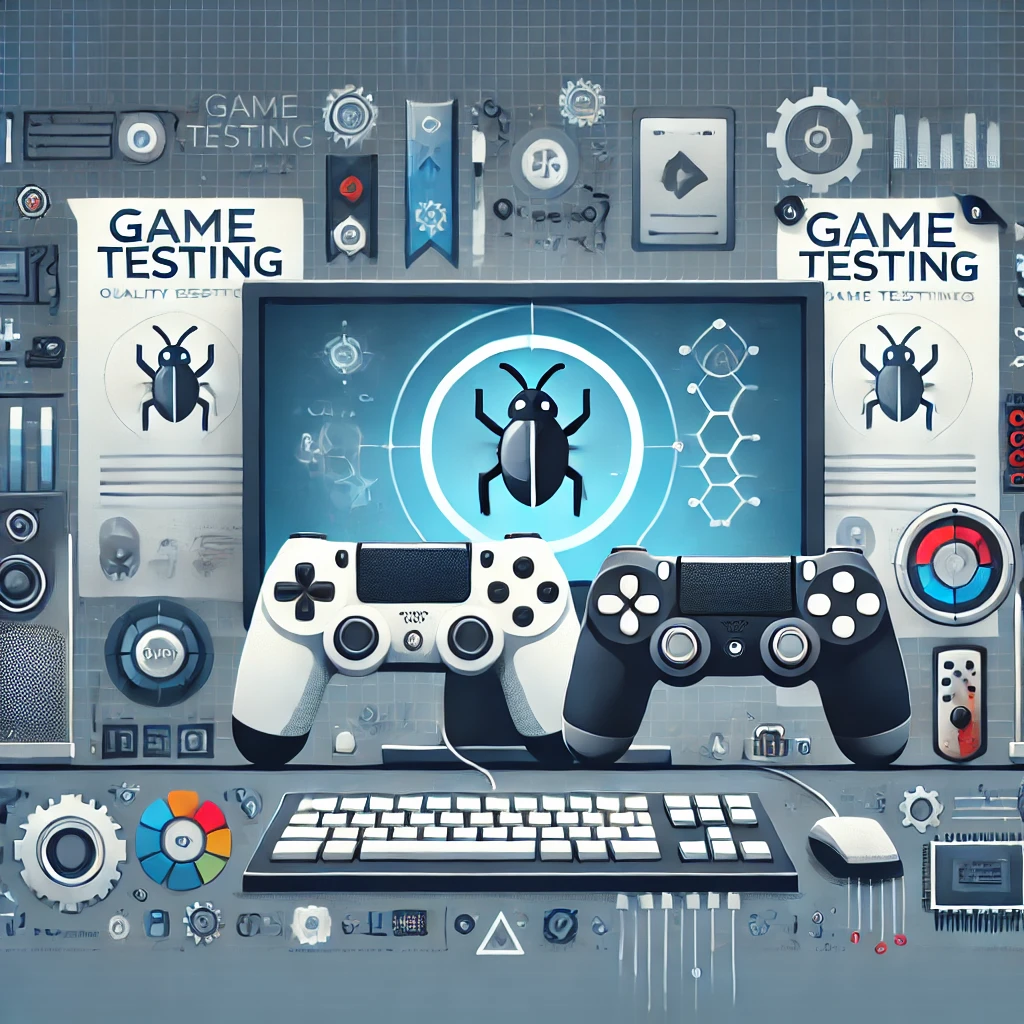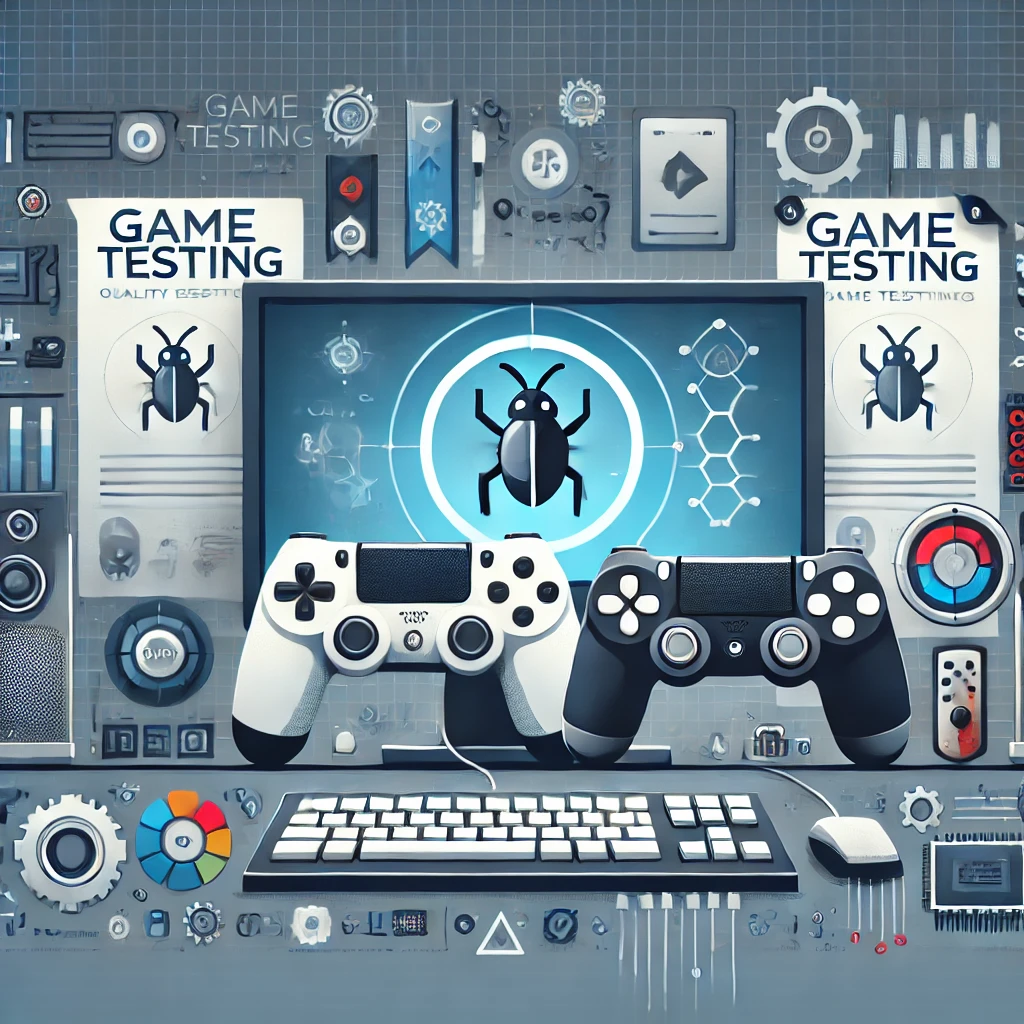Game testing, including black box testing and unit testing, is a key part of the game development process. It helps to make sure that a video game is fun, works well, and offers a great user experience in that particular game. This testing covers many things such as the main features, graphics, performance, and safety. By finding and fixing bugs, glitches, and design problems, Game Testing helps create a smooth and enjoyable gaming experience for the players.
Key Highlights
- Game testing is a crucial aspect of the game development process, ensuring game quality and a positive user experience.
- It involves multiple testing phases, starting from the initial concept and continuing even after the game is released.
- Various types of game testing, like functional testing and compatibility testing, address different quality aspects of the game.
- Understanding the various testing stages and employing the relevant techniques are essential for the successful launch of any video game.
- By identifying bugs and gathering valuable feedback, game testing significantly enhances the final product and increases user satisfaction.
Understanding Game Testing Basics
Game testing is a crucial quality assurance process designed to identify bugs, glitches, and design flaws before a game is released. It involves evaluating various aspects like gameplay, performance, graphics, and user experience to ensure the game functions as intended. Different types of testing play a role in this process: functional testing checks that game features and mechanics work correctly, while performance testing evaluates how well the game runs under various conditions.
Compatibility testing ensures the game operates smoothly across multiple platforms and devices, and usability testing focuses on user experience and ease of play. Localization testing verifies that content is accurately adapted for different regions, while security testing protects the game from hacking and data breaches. Key components of game testing include bug tracking, regression testing, and the creation of detailed test cases.

Why is Game Testing Important?
- Bug Detection: Finds technical glitches and issues that may cause problems in gameplay.
- Quality Assurance: Saves players from an unstable game with the potential to be either fascinating or frustrating.
- User Experience: Enhances gameplay balance, mechanics, and overall satisfaction.
- Compatibility: Ensures the proper running of a game across various devices and platforms.
- Brand Reputation: Builds confidence in the developer’s abilities and reputation by providing a quality, bug-free product.
- Community Trust: Players trust the developers, especially if their suggestions are considered when implementing Beta phases.
Overview of the Game Development Lifecycle
The game development process consists of several steps, and each step is used in stages to build a final video game. In order to understand why the testing of the game is so essential, you need to know all these stages very well.
It most commonly begins by brainstorming and prep work-on things like game design, target audience, to name a few-from there, a product is vetted. Then comes production. This is where all of the heavy work gets done-from programming to making art, level designing and more. Finally, testing, refining, marketing, and then releasing the product to the public are the post-production stages.
Testing at all these stages is very crucial in game testing. That way, it is ensured that the game should be good, work well, and be fun to play.
Pre-Production Testing Stage
- Concept Validation: Tests the original concept of a game, mechanics and idea, as a proof of its feasibility and interest.
- Prototype Testing: Prototyping and testing early developments to identify technical issues or possible design errors.
- Technical Feasibility: Checks if the concept of the game is technically feasible with the available technology and resources.
- Game Engine and Tools Testing: Test the game engines and development tools to ensure they meet up with the project requirements.
- Art Style and Design: Testing of test graphics, test animations, and art direction, which determines what style to adopt.
- Gameplay Mechanics: Validation of the core gameplay mechanics and loops by functionality and player engagement
- Project Planning: Results from testing is used to refine the roadmap for development and resource allocation
Production Testing Stage
- Alpha Testing: In-depth internal tests on early builds in order to find big bugs and glitches and gameplay errors.
- Gameplay Testing: Checking core gameplay mechanics for the right levels of difficulty, making sure the game is indeed enjoyable and engaging.
- Performance Testing: Testing how stable the game runs, its frame rate, and its performance on different kinds of hardware configurations.
- Compatibility Testing: Making sure the game runs fine on different platforms and devices as well as on different operating systems.
- Art and Animation Testing: Quality and consistency check on graphics, textures, animations, and visual effects.
- Testing Audio: Proper clarity, balance, and sync of sound effects, voice-overs, and background music.
- Network and Multiplayer Testing: The Online features should be completely free from issues and the server performance under various conditions must be stable.
- User Interface: Check menus, button, and HUD elements for intuitive, proper working, and responsive.
- Regression Testing: It ensures previously fixed bugs do not come up in association with newly implemented changes.
- Bug Tracking: Recording, prioritizing, and tracking of bugs using specific bug-tracking tools to make the fixing process efficient.
Post-Production Testing Stage
- Final QA: Severe testing of the complete game to identify any leftover bugs or glitches before release.
- Gold Master Testing: Testing that would ensure that the final product had no more problems and bugs, labeled as the “Gold Masterâ€.
- Compliance Testing: It would ensure that the game complies strictly to the rules and requirements of every platform, for example, PlayStation, Xbox, and Steam requirements.
- Localization Testing: Tests for translated content, cultural references, and UI adjustments of the international markets for accuracy and relevance.
- Load and Stress Testing: Tests the capacity of the servers and stability of the system by simulating heavy user traffic for ensuring that the servers can tolerate the expected load of players.
- Patch Testing: Tests performance and stability of the day-one patches/updates meant to address the last-moment issues.
- Certification Testing: Official approval from platform providers by clearing its Certification Process.
- Launch Day Testing: Reviewing the game in the wild for any unknown bugs and performance issues when deployed in a natural playing condition.
- Analyze User Feedback at Launch: All feedback collected, reviewed, and adopted at launch to identify improvement areas or probable future updates.
- Ongoing Support: Preparation of post-launch patches, updates, as well as downloadable content (DLCs) based on the community feedback noticed.
Conclusion
All this being said, it’s very important to understand the various stages of game testing. This ensures that the game is of good quality and will therefore succeed. Every stage counts, starting from the pre-production up to the post-production, as each improves the game itself and fixes faults that may have occurred. A game in testing makes the gaming experience even better. It also grows customer satisfaction and loyalty. A clear process of testing, which the game developers use, while hearing out the comments from different stages of the production of the game, can be presented with an excellent final outcome. Knowing the basics of game testing is essential. It helps in having great games that invite more players and thus win at playing.
Frequently Asked Questions
-
What are the types of game testing?
There are many types of game testing. The tests include compatibility, functional, performance, compliance, and stress testing. All these tests ensure that the game performs in an ideal manner. They ensure that a given game performs well on all machines. They also prove its compliance with rules set by any platform in which it will be used. In addition, they ensure that a multithreaded application can handle several users at once.
-
What is the difference between alpha and beta testing?
It is at alpha testing that testing stages begin. Alpha testing is done by the QA team within the company. Beta testing follows this step. This involves a larger group of outside users who are giving feedback. Both these steps are of great importance in the game development process.
-
Can game testing be automated?
Yes, indeed, parts of game testing can be automated. Regression testing, in particular, takes on repetitive tasks, and automated testing can indeed speed things up and cover so much more ground. But it still cannot replace human judgment when evaluating the quality of the overall game and the experience that will be perceived by its users.
-
How to become a game tester?
To become a game tester, a person needs to enjoy playing games as they spend much of their time doing it. Also, it demands better attention and awareness regarding the concept of quality assurance. With experience in various types of games and development of appropriate skills, it can lead to a fulfilling job in the gaming industry.
The post Exploring the Different Stages of Game Testing appeared first on Codoid.
Source: Read More

